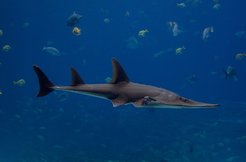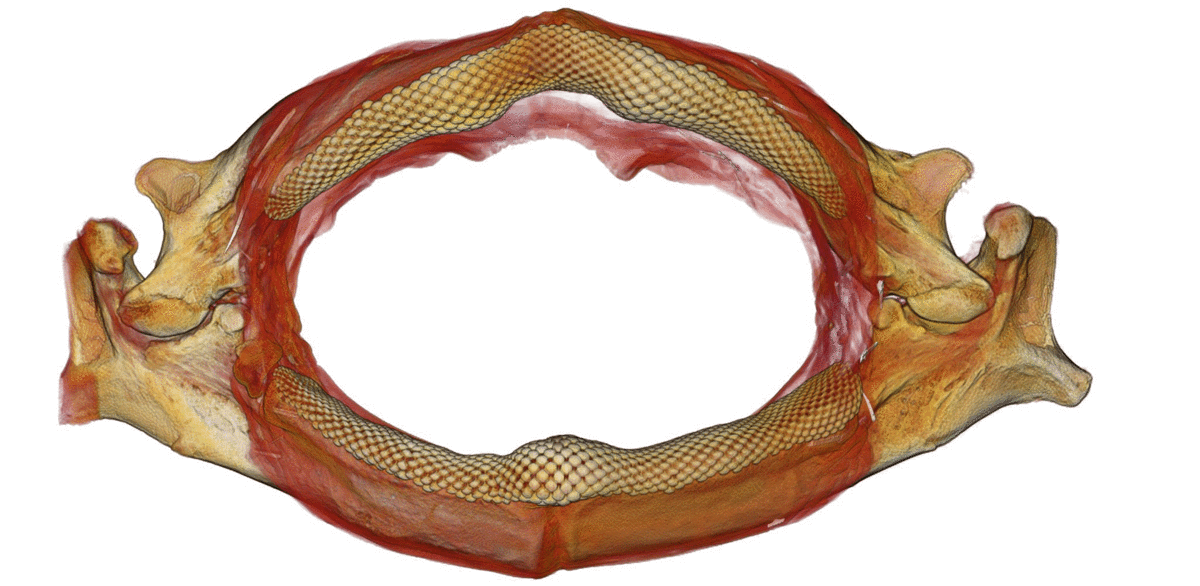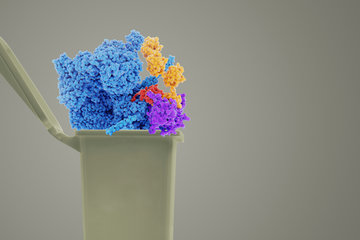Deceptive teeth
Although the dentition of the wedgefish appear designed to crush shellfish, it also eats stingrays

The fact that different animals have different shaped teeth is something every child learns in school. Dogs have sharp canines for tearing lumps of meat from their prey. Cows use their broad molars to grind poorly digestible grasses. Clearly teeth and the masticatory apparatus can tell us a lot about what an animal eats. This is particularly important for palaeontologists attempting to understand the behaviour and evolution of extinct organisms. Here, the shape of the teeth provides important evidence of how an animal lived and its relationship with its environment.
By studying the jaw of a wedgefish, Mason Dean, scientist at the Max Planck Institute of Colloids and Interfaces, together with colleagues from England and the United States, has now shown that the simple statement, “Show me your teeth, and I’ll tell you what you eat,” does not always hold – and that there are limits to the extent to which an animal’s lifestyle can be inferred from the shape of its teeth. Dean is a zoologist at the Max Planck Institute in Potsdam-Golm and works at the interface between biology and materials science. He is particularly interested in how organisms build specific structures such as cartilage and bone, and how they repair them in response to injury.
A jaw full of tail spines
In investigating the cartilage skeleton of sharks and ray, he performed a high-resolution CT scan of the jaw of a batoid fish of the genus Rhynchobatus. These fish are known as wedgefish or guitarfish, due to their shovel-like shape, with this particular specimen coming from the seas around the Philippines. Until now, it had been assumed that Rhynchobatus had a diet of hard-shelled animals such as shellfish and crabs. Its teeth are rounded and pebble-like and clearly well suited to cracking relatively smooth, but hard bivalve shells.
“When we analysed the CT images, we were astonished,” explains Mason Dean. “The Rhynchobatus jaw was peppered with broken stingray spines, though these were barely visible from the outside.” This meant that this individual Rhynchobatus must have eaten large numbers of stingrays, which had embedded their tail spines in its jaw when swallowed.
Hunting behaviour rewritten
This painful experience clearly did not deter Rhynchobatus from hunting further stingrays. However, until now, it had been believed that only large sharks, with their pointed teeth, preyed on stingrays. For Dean and his colleagues, the results of the CT scan throw a new light on the way of life of Rhynchobatus.: “From the shape of the teeth alone, we would never have concluded that Rhynchobatus also hunts stingrays.”

This data shows that the hunting behaviour of Rhynchobatus is completely different than previously thought. Although these fish are still fairly common, no diver had ever recorded this behaviour. Dean believes: “These results are of great interest to palaeontologists, as they show that you can quickly come to the wrong conclusion from analysis of jaws, teeth and the masticatory apparatus. In future, we therefore recommend looking for other indicators of diet and behaviour when analysing fossils.” In addition to visible signs of wear, these could include microscopic traces and scratches which could provide clues to alternative food sources. Dean suggests that it would also be interesting to take a closer look at animal fossils and specimens held in museums, “Who knows what surprises await us?”
Bone-like tissue in cartilaginous fish
For Mason Dean, the results are interesting not just from a zoological and palaeontological point of view, but from a materials science perspective as well. Cartilage is a tissue that barely heals or heals very poorly. Like all shark and ray species, the skeleton of Rhynchobatus consists largely of cartilage, which is stabilized only superficially by a special type of mineralized crust. Anatomically and evolutionarily, this makes the skeleton of the cartilaginous fishes distinct from all other vertebrate skeletons.
Bones have a major advantage in that unlike cartilage they are capable of healing completely. Despite this, sharks and rays have managed very well with their cartilaginous skeleton for millions of years. From the CT scans, Dean and his colleagues discovered that the spine tip fragments that had come into contact with the skeleton were surrounded by a callus, a hard, bone-like covering. “There must therefore be a metabolic process in the cartilaginous skeleton of these fish, which enables them to respond to damage and form new, bone-like, mineral tissue,” says Mason Dean. “The nature of that process and how closely it resembles healing processes in bone is what we want to study next.”













